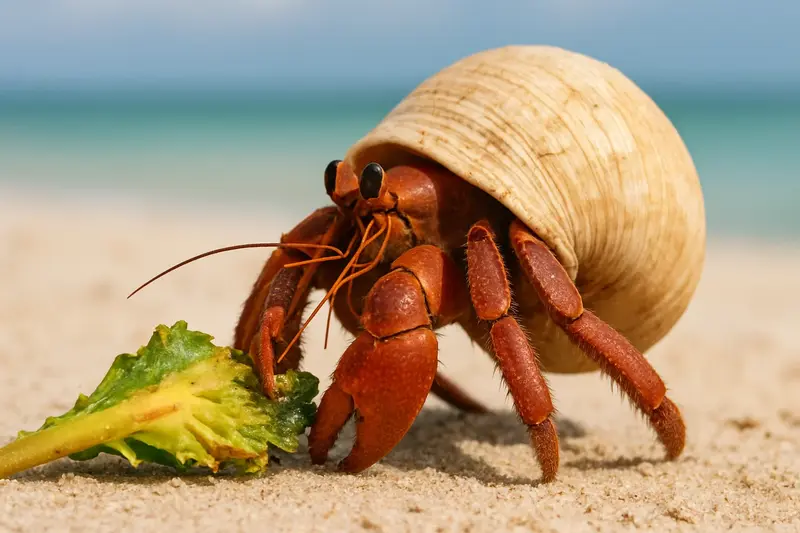Hermit crabs are fascinating crustaceans known for inhabiting discarded shells to protect their soft, vulnerable abdomens. There are over 800 species of hermit crabs, found in both terrestrial and aquatic environments. Though they are often seen as low-maintenance pets or quirky beach dwellers, their dietary habits are surprisingly diverse and vital to their health and ecosystem role. This article explores what hermit crabs eat at different life stages and environments, and how to provide a balanced diet for those kept in captivity.

Hermit crabs are omnivorous scavengers. They feed on a wide range of organic matter found in their environment, helping to clean up debris and decaying material.
Most hermit crabs are active at night, using their sensitive antennae to locate food under cover of darkness.
Marine hermit crabs, commonly found in tidepools and coral reefs, feed on:
Algae
Small fish remains
Mollusk scraps
Detritus (decomposing organic matter)
Microscopic plankton
Land hermit crabs consume a mix of plant and animal material:
Fallen fruits and leaves
Tree bark
Dead insects or small animals
Bird or reptile droppings (a source of calcium and protein)
Hermit crabs will eat almost anything they find that is edible, including bits of carcasses, eggs, or discarded shells with organic residue.
A healthy diet for hermit crabs includes:
Proteins: insect larvae, fish flakes, cooked meats
Carbohydrates: fresh fruits and vegetables, whole grains
Calcium: essential for exoskeleton development; sources include crushed eggshells, cuttlebone, coral sand
Fatty acids: found in seeds, nuts, and some fish
Feeding a varied diet ensures all nutritional bases are covered and prevents boredom in captive crabs.
There are hermit crab-specific food products that contain essential nutrients. However, these should be supplemented with fresh, whole foods.
Apple slices, banana, mango, grapes
Leafy greens (e.g., kale, spinach)
Fish flakes, bloodworms, brine shrimp
Cooked chicken or eggs (unseasoned)
Avoid feeding hermit crabs the following:
Processed human food (salty, sugary, or fried)
Onions, garlic, citrus fruits (irritating to their digestive system)
Raw beans or potatoes (toxic in raw form)
Offer fresh food once per day and remove uneaten portions after 12–24 hours to prevent mold and bacteria.
Provide both freshwater and saltwater in shallow, non-metallic containers. Hermit crabs need both for drinking and shell soaking.
Hermit crabs use their claws to pick up and manipulate food, so food should be cut into small, manageable pieces.
During molting, hermit crabs often bury themselves and may not eat for days or weeks. Do not disturb them during this time.
Juvenile and actively growing crabs require more protein and calcium to build their exoskeleton.
Energy-rich foods like seeds, nuts, and fruit help support reproductive health in mature crabs.
By feeding on decomposing material, hermit crabs return nutrients to the ecosystem and help prevent disease buildup.
Their foraging helps maintain beach and reef cleanliness, benefiting other marine and coastal species.
Hermit crabs may be simple creatures, but their dietary needs are complex and essential for their survival and environmental function. Whether in the wild or in a terrarium, these scavengers require diverse, nutrient-rich diets to thrive. Understanding what hermit crabs eat allows us to support their health, appreciate their ecological contributions, and promote better captive care practices.
animal tags: Hermit-Crabs
We created this article in conjunction with AI technology, then made sure it was fact-checked and edited by a Animals Top editor.